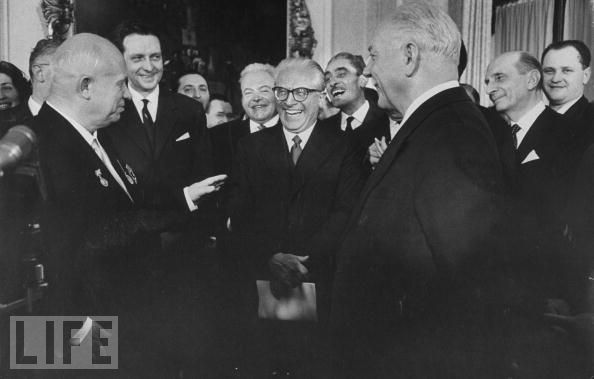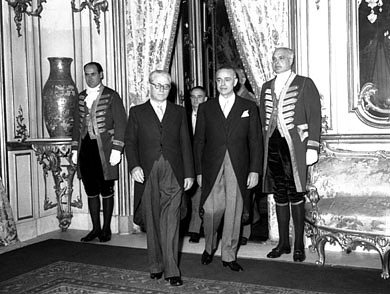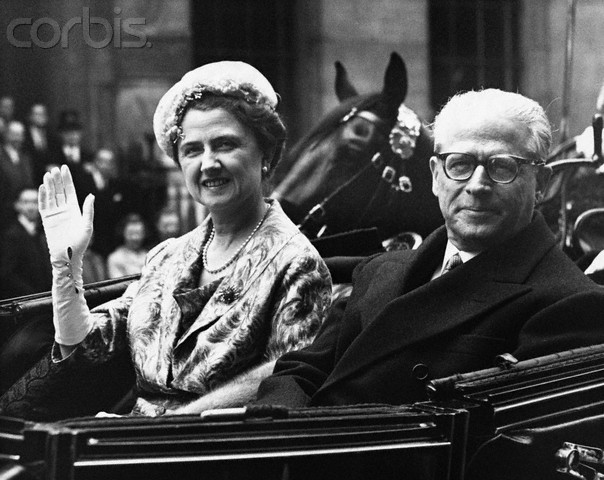<Back to Index>
- Physician Thomas Sydenham, 1624
- Composer Nicholas Lanier, 1588
- 3rd President of the Italian Republic Giovanni Gronchi, 1887
PAGE SPONSOR
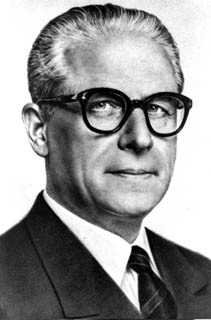

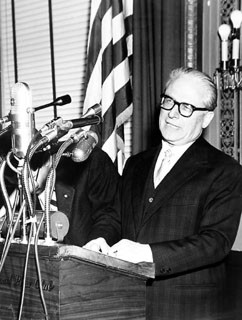
Giovanni Gronchi (10 September 1887 – 17 October 1978) was an Italian politician who became the third President of the Italian Republic in 1955, after Luigi Einaudi. His presidency lasted until 1962 and was marked by a controversial and failed attempt to bring about an “opening to the left” in Italian politics.
He was born at Pontedera, Tuscany, and was an early member of the Christian Movement founded by the Catholic priest don Romolo Murri in 1902. He obtained his first degree in literature and philosophy at the Scuola Normale of Pisa. Between 1911 and 1915 he then worked as a high school teacher of classics in several Italian towns (Parma, Massa di Carrara, Bergamo and Monza).
He volunteered into the First World War and after its end in 1919 was among the founding members of the Catholic Italian Popular Party. He was elected MP for Pisa in both the parliamentary elections of 1919 and 1921. A trade union leader in the Italian Confederation of Christian Workers, in 1922 – 1923 he served in the first government of Benito Mussolini as Under Secretary for Industry and Commerce. In April 1923, however, a national meeting of the Popular Party held in Turin decided to withdraw all PPI representatives from the government. He then went back to his role as leader of the Catholic trade unions, and tried to face the daily violence brought against them by the fascist squads.
In 1924, after Luigi Sturzo had resigned as Secretary of the PPI, he became leader of the party, together with two other "triumviri" (Spataro and Rodinò). Reelected to Parliament in the same year, he joined the anti-fascist opposition of the so-called Aventine movement (from the hill of Rome where the opposition withdrew from Parliament). In 1926 he was expelled from Parliament by the new regime.
In the years between 1925 and 1943 he thus interrupted his political career. In order to avoid to have to become a member of the Fascist Party,
he also resigned his position as schoolteacher, and earned his living
with a successful business career, first as a salesman and then as an
industrialist. In 1943 – 1944 he was a co-founder of the new Christian Democratic party (DC), and became a leader of its left-wing faction, together with men like Giorgio La Pira, Giuseppe Dossetti and Enrico Mattei (the future boss of ENI, the Italian government owned petrochemical giant). He was also a member of the Comitato di Liberazione Nazionale, the multi-party committee of the Italian Resistance, as a representative of his party. Although often in conflict with his party’s majority and its Secretary Alcide De Gasperi, he served as Industry minister in 1944 – 1946 and as a member of the Constituent Assembly in 1946. In 1947, as the Cold War began, he vehemently opposed his party’s decision to expel the Italian Communist and Socialist parties
from the national government. From 1948 to 1955 he was elected
President of the Italian Chamber of Deputies (the lower branch of
Parliament). In
1955 Luigi Einaudi’s term as first President of the Italian Republic
came to an end, and Parliament had to choose his successor. The new
Secretary of the DC, Amintore Fanfani, was promoting for the job the liberal Cesare Merzagora, who was then President of the Senate. However the extreme right-wing of the party – led by Giuseppe Pella, Guido Gonella, Salvatore Scoca and Giulio Andreotti – joined hands with the trade-unionist left – led by Giovanni Pastore, Giorgio Bo and Achille Marazza –
in an “uprising” against the party leadership, in order to get Giovanni
Gronchi (“Parliament’s man”) elected instead. The move had the support
of the Communist and Socialist parties, and also of the monarchic and neo-fascist right. After a bitter battle and the final crumbling of the centrist front,
on April 29, 1955 Gronchi was elected President of the Republic with
658 votes out of 883. He was the first Catholic politician to become
Head of the Italian State. His
period in office lasted until 1962. It was marked by the ambition to
bring about a gradual “opening to the left”, whereby the Socialists and
the (still Stalinist) Communist Party would be brought back into the national government, and Italy would abandon NATO, becoming a non-aligned country. There was however stiff parliamentary opposition to this project, particularly by the small Italian Liberal Party,
which was deemed a necessary ingredient of any viable majority. In an
attempt to escape the deadlock, in 1959 Gronchi appointed as Prime Minister a trusted member of his own Catholic left-wing faction, Fernando Tambroni,
sending him to Parliament with a “President’s government” but no
pre-arranged majority. However Tambroni found himself surviving in
Parliament only thanks to neo-fascist votes.
This unforeseen “opening to the right” had serious consequences. In
1960 there were bad riots in several towns of Italy, particularly at Genoa, Licata and Reggio Emilia,
where the police opened fire on demonstrators, killing five people. The
Tambroni government thus ended in ignominy; forced to resign, it was
followed by an all-DC government, with a traditionally centrist
parliamentary majority. The
unhappy Tambroni experiment tarnished Gronchi’s reputation for good,
and until the end of his period of office he remained a lame-duck
President. In 1962 he attempted to get a second mandate, with the
powerful help of Enrico Mattei, but the attempt failed and Antonio Segni was elected instead. As he ceased to be Head of State, he became a life senator by right, according to the Italian Constitution. He died in Rome on October 17, 1978 at the age of 91. For
an overall historical assessment of his presidency it must certainly
be kept in mind the Tambroni failure, with its suggestion of an
authoritarian approach. Yet an “opening to the left” of sorts did in
fact happen soon after his mandate was over. Indeed, the first center-left coalition was formed by Aldo Moro as
soon as 1964, when the Socialists (but not the Communists) entered the
government. In the 1970s, the Christian Democrats and Communists made
efforts toward what was called the Historic Compromise. On this basis he might be credited with some important foresight and a lasting influence.
Still,
it is hard to maintain that his political project had really very much
to do with the center-left governments that followed each other between
1964 and 1992. During most of this period the Communists were isolated
even more tightly than before, due to the loss of their former
Socialist allies and the bitter conflict that followed with them,
particularly after Bettino Craxi became
the Socialist leader. Outside influences were later revealed to be at
work as well. A 2000 Parliament Commission report concluded that the
strategy and operations by the clandestine, US-supported, "stay-behind" Gladio was
designed to "stop the PCI, and to a certain degree also the PSI
[Italian Socialist Party], from achieving executive power in the
country". In any case, Italy kept its socio-economic structure as a market economy and its foreign policy alignment.
